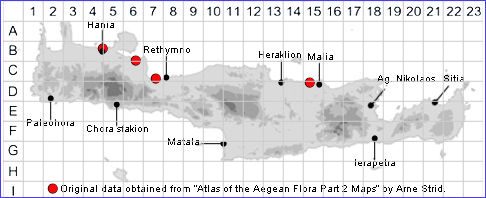
SPECIES DESCRIPTION
EUPHORBIA PROSTRATA
Family and Genus:- See- EUPHORBIACEAE/ Subgen. CHAMAESYCE
Common Names:- None
Homotypic Synonyms:- Anisophyllum prostratum, Aplarina prostrata,
Chamaesyce prostrata, Tithymalus prostratus.
Meaning:- Euphorbia (L) For Euphorbus, physician to the King of Mauritania.
Prostrata (L) Lying flat on the ground, but not rooting.
General description:- Procumbent annual.
Stems:-
1) To 35 cm. with up to 10 branches, generally red and pilose above green and
glabrous below.
Leaves:-
1) 6.5-9 x 4-6 mm, ovate, obtuse, asymmetrical at the base, margins, serrulate to
subentire, pubescent to glabrescent on both surfaces.
2) Petiole, c. 1 mm.
3) Stipules, c. 1 mm, triangular, upper free, lower often connate.
Flowers:-
1) Glands, transversely ovate, with small appendages.
Fruit:-
1) Capsule, 1·5 x 1·5 mm, shallowly sulcate, sharply keeled, smooth, glabrous
except for the ciliate keels.
2) Seeds, 1 x 0.4-0.7 mm, ovoid-quadrangular, deeply transversely sulcate, greyish.
rugulose when ripe.
Key features:-
1) Ripe seeds, rugulose.
2) Capsule, hairy on the keels only.
Habitat:- Sandy sea-shores, gravelly road verges, ruderal habitats, rarely inland. 0-
400 m.
Distribution:- Fairly common in S & W Greece rare in the north - Native of North
America. naturalised in the Mediterranean region and elsewhere. Rare on Crete,
currently known from a few areas along the north coast.
Flowering time:- Mainly Sept-Oct occasionally earlier.
Photos by:- Charalambos Chiotelis
